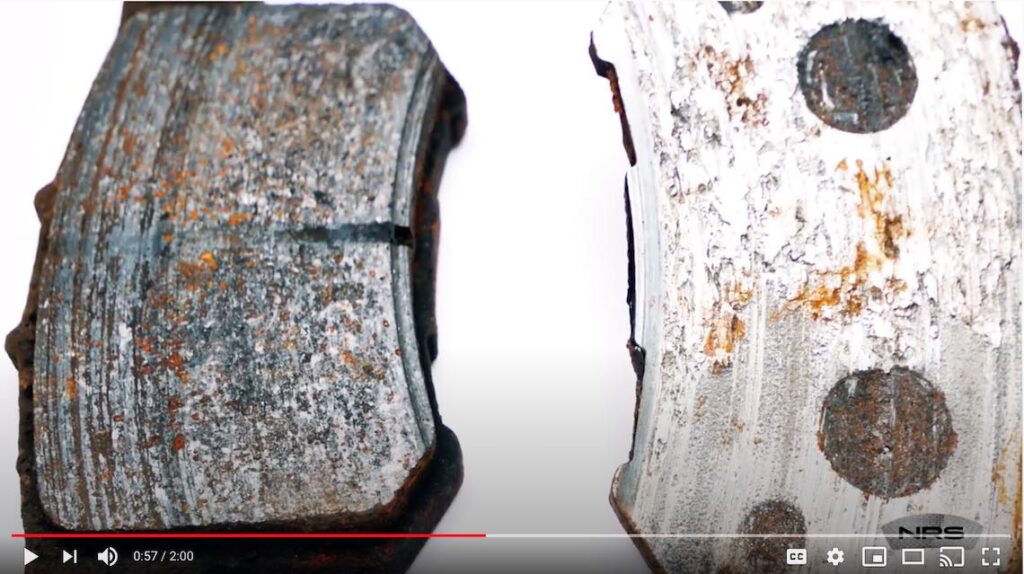Recently, scientist in the US collected water and air samples from roadways as part of an environmental impact study. When they sorted through the particles and classified the pollutants, they came to a surprising conclusion. The majority of the particles didn’t come from tailpipes… they came from brake pads and tires.
The scientist found the small bits shed from the brake pads contained heavy metals like mercury, lead and cadmium. These heavy metals can cause cancer and congenital disabilities (birth defects). In the past decade, environmental agencies have taken action to reduce these heavy metals in friction material. In the US, the Better Brake Law limits the levels of the most toxic heavy metals like mercury, lead and cadmium to .1% by weight of the brake pad’s friction material. But, the Better Brake Law does not test the paint used by some brake pad manufacturers for cosmetic reasons and corrosion resistance.
Some paints may contain lead, cadmium and chromium. The paint can flake and separate from the backing plate due to corrosion and wear. These toxic paint particles can find their way onto the road and into waterways.
This environmental contamination can be prevented by brake pads that do not need paint. Some brake pads use galvanized backing plates. Galvanization eliminates the need to paint the backing plate because the galvanized coating prevents corrosion of the steel backing plate and is applied to the entire surface, including the area under the friction material. The galvanized coating is electro chemically applied to the backing plate and not painted on.
The galvanized coating is made of zinc, which has almost zero environmental impact and is an essential element for life that is needed by the immune system.
The next time you select a set of brake pads, think about what they will leave behind. If a brake pad loses all its paint due to rust, the paint has to go somewhere and it might end up in your water.
